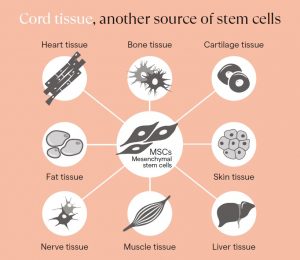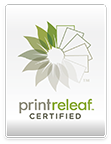Why store stem cells?
1,800+ cord tissue units released from our group for transplantation
Store up to 16 segments of cord tissue for each customer
Our group owns two laboratories which fulfil the Good manufacturing practice (GMP) standards required by European Medicines Agency
We are the only family bank in Europe, of which the cord tissue stem cells are used extensively in therapies, which means procedures used in our laboratories are Therapy Approved
FamiCord Group goes an extra mile not only to freeze and storage a cord tissue stem cells, but also to prepare the advance therapy medicinal product when needed. Advanced therapy medicinal products (ATMPs) are medicines for human use that are based on genes, tissues or cells. They offer groundbreaking new opportunities for the treatment of disease and injury.
FAQs
Smart Cells has an HTA licence which covers procurement, testing, processing, storage, import, release, and export of cord blood cells and tissue. Smart Cells has ISO9001:2015 certification, and participates in the UK National External Quality Assessment Service (NEQAS) quality assurance scheme for full blood and CD34 cell counting.
Smart Cells takes ongoing Quality Assurance very seriously, with a rigorous programme of validating and auditing all critical practices and procedures. Fully trained and experienced staff operate according to validated procedures. The Smart Cells laboratory technical team are educated to degree and post graduate degree level in relevant biomedical sciences and use globally recognised techniques and technologies in the state-of-the-art processing facility.
The Smart Cells approach to ongoing Quality Assurance, regulatory compliance, integrity, and transparency is supported and overseen by the Scientific Director, Head of Laboratory Operations, and Quality Officer.
Cord blood transplantation is a clinically effective form of treatment for many patients with cancer and blood diseases who need a stem cell transplant. More recently, cord blood has become a relevant source of cells in regenerative medicine.
There is no definitive consensus on how long frozen cord blood can be stored but scientists and clinicians worldwide are of the opinion that if cryopreserved and stored properly, then storage can be for decades or more. Smart Cells use state of the art processing, cryopreservation, and 24/7 monitored storage technologies designed to optimise the viability of stem cells. In vapour phase nitrogen temperatures below -170 degrees Celsius, all metabolic activities in cells are suspended, meaning there should be no deterioration. The majority of public and private banks worldwide use similar tried and tested technologies.
Key work undertaken by Professor Hal Broxmeyer, a distinguished world leader in the field of cord blood therapeutics has demonstrated efficient cell recovery at five years, 10 years, 15 years, and most recently 23.5 years after cells were cryopreserved (1). Cord blood storage has been available for around 29 years, although in the early years not many units were being stored and used. It is therefore not possible to look at empirical data beyond that time point, however Professor Broxmeyer’s team plan to perform a 30-year assessment on the oldest cord blood specimens (2). Realistically, it is in the last 18 years approximately that transplantation using cord blood has become a fully accepted therapeutic option and experts in the field have confidence that ongoing banking and use should continue (3).
At Smart Cells, six years is the longest interval between storage and thawing of frozen cord blood cells that were given to a patient as a transplant which was satisfactory in terms of cell recovery and engraftment. No units older than this have yet been requested.
As part of Smart Cells’ Quality Assurance programme and regulatory compliance, the team regularly undertake validation studies to ensure that the processing, freezing, and storage of cord blood is efficient and that total nucleated and viable CD34+ stem cell recoveries are satisfactory after thawing.
If procedures to process, store, and thaw stem cells are of a high standard, the main factor that can potentially affect the ultimate post-thaw recovery is the original quality of the cord blood sample itself. Those with initial low viability/low cell numbers may not withstand the thawing process in the same way as a more cellular and robust product.
It may take some time before clinical studies demonstrate conclusively that cord blood stem cells are viable after long-term frozen storage beyond 30 or more years. Clinical proof will require treating of patients with cord blood units that have been in storage for decades but for now, Smart Cells’ advice aligns with current worldwide expert opinion.
(1) https://www.ncbi.nlm.nih.gov/pmc/articles/PMC3100689/
(2) https://parentsguidecordblood.org/en/news/how-long-can-cord-blood-be-stored
(3) https://www.ncbi.nlm.nih.gov/pmc/articles/PMC5442723/
TNC stands for Total Nucleated Cells which are the white blood cells within a cord blood sample. Smart Cells count these cells as this is an important measurement of the success of the collection in terms of cell numbers. Within the TNC cell fraction, the Smart Cells team look at numbers of CD34 positive cells. This is a critical measurement as CD34 is a marker of stem cells.
Both TNC and CD34 levels in a cord blood sample are taken into account by clinical teams when deciding if there are sufficient stem cells for treatment.
All the reasons you banked for the first child are still valid for additional children.
If you want your baby to have the option of using his/her own cells, then you need to bank them.
If you are banking to cover siblings, then the ability to use cord blood from one child for another depends on whether they have matching HLA types. Two full siblings have a 25 per cent chance of being a perfect match, a 50 per cent chance of being a half match, and a 25 per cent chance of not matching at all. For a cord blood transplant, donor and patient must match at least 4 out of 6 HLA types. The more siblings with banked cord blood, the more chance that they cover each other for possible transplants or other therapies for which sibling stem cells are accepted.
References: Odds of sibling match are based on haplotype inheritance: that the child will receive 3 HLA types as a group from each parent.
Source: Parent’s Guide to Cord Blood
Smart Cells offer a fully private storage option for the long-term storage of cord blood and tissue. This service is a paid service and the samples are solely stored for your own private use. If you wish to enquire more about cord blood and tissue donation then please visit the NHS Blood Bank or the Anthony Nolan Trust: http://www.nhsbt.nhs.uk/cord-blood-bank/ https://www.anthonynolan.org/8-ways-you-could-save-life/donate-your-umbilical-cord-blood
Stem cells may be used in mainstream transplantation to help treat blood and bone marrow cancers or diseases such as Thalassaemia or sickle cell disease. If the cells being used are autologouse (from the individual for their own use), they are able to restore the blood and immune systems following chemotherapy used to treat the disease. If the transplant is allogeneic (from one sibling to another), not only can the cells restore the blood and immune systems, but they may play a role in cancer destruction too.
Stem cells may also be used in regenerative medicine to help repair or replace damaged or diseased tissues or cells. These evolving regenerative applications are fairly recent and are typically being undertaken as part of research or clinical trials. View more information on the rest of the Smart Cells https://www.smartcells.com/stem-cells/why-store-stem-cells/
No additional costs will be incurred for the transportation of the sample at any time for therapeutic use.
If an HLA test is required, the cost of a low-resolution test is covered. If clinical teams require high-resolution testing, there may be an extra cost.




